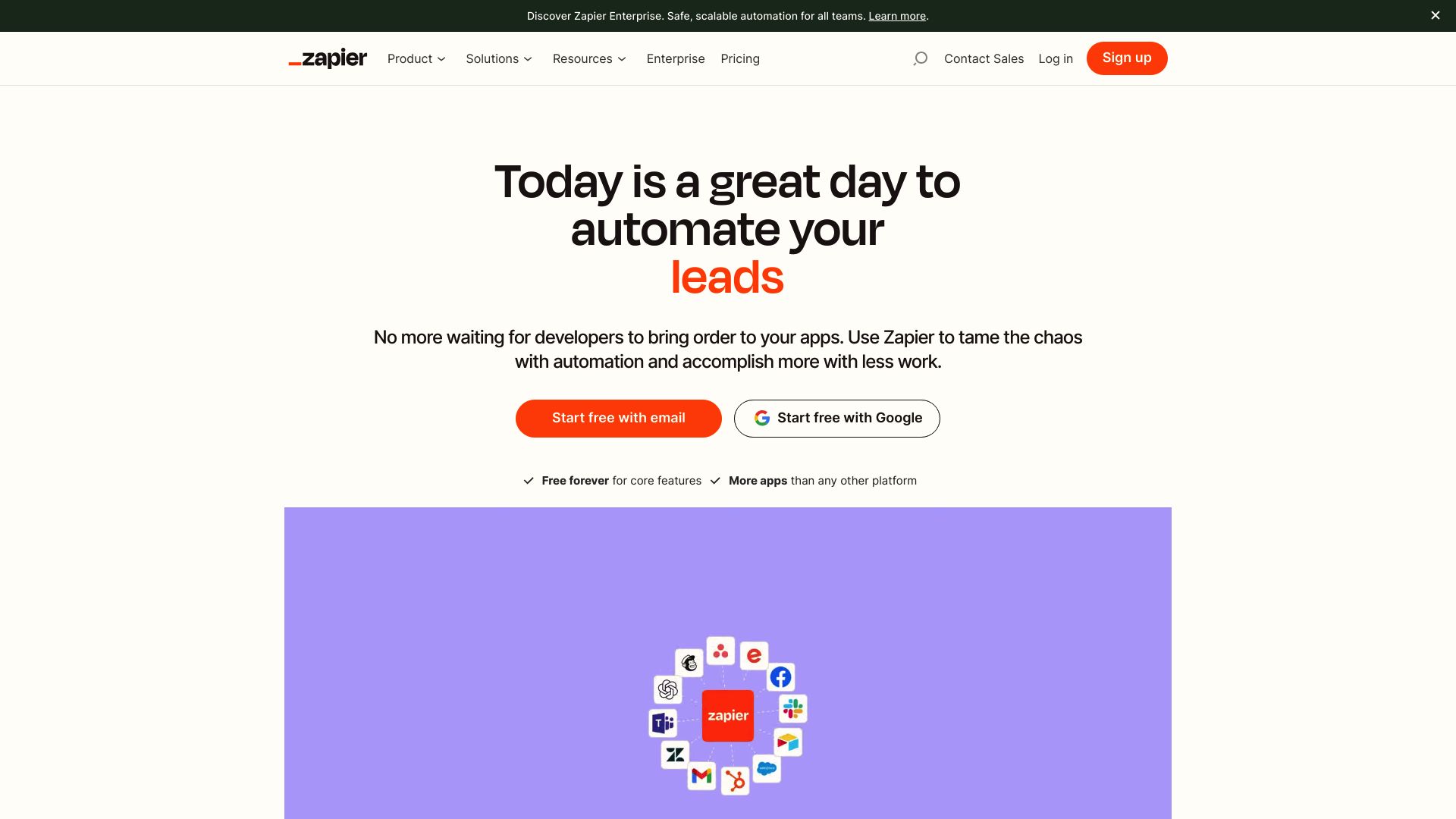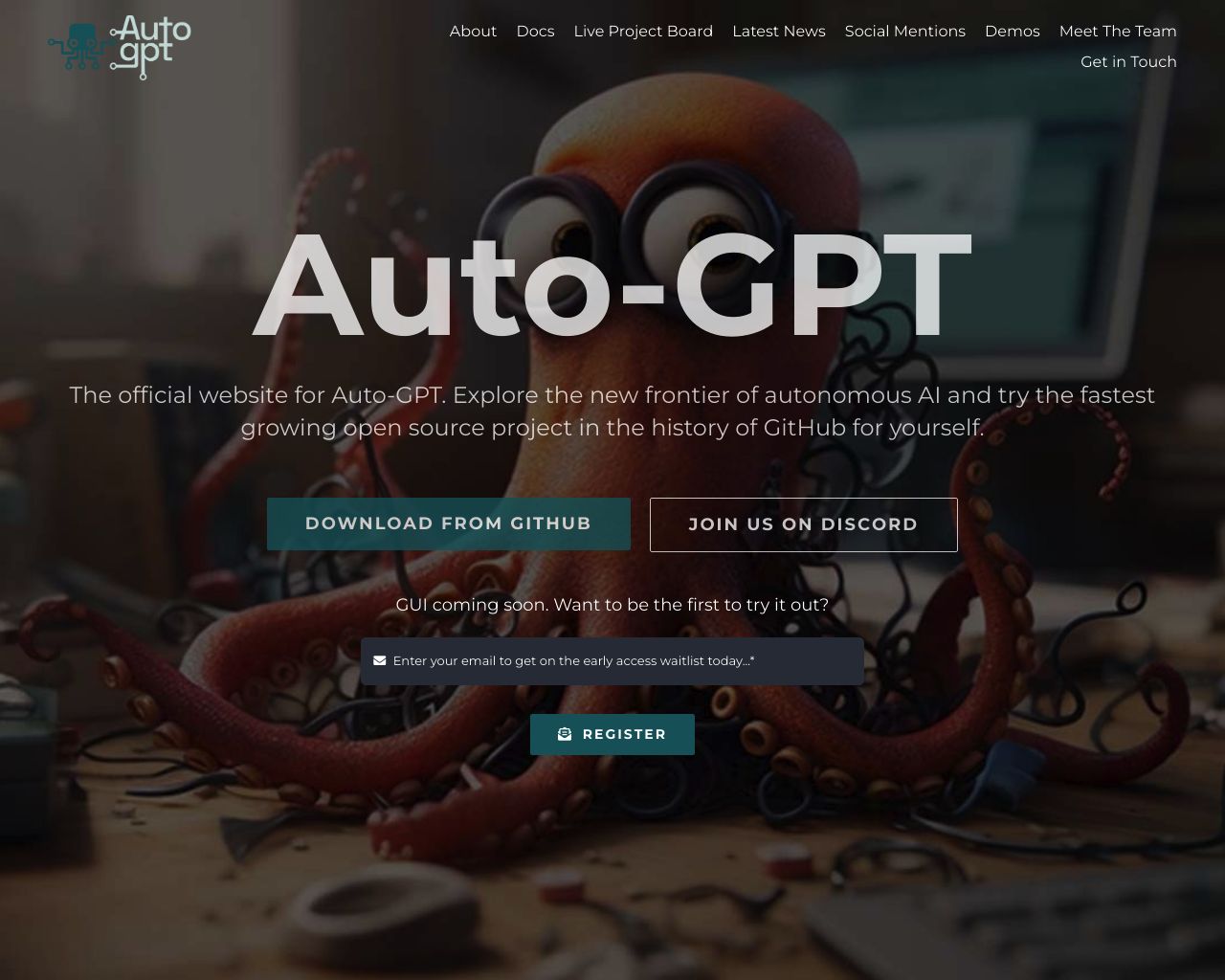Zapier vs. AutoGPT: Comparing AI Automation Powerhouses
AI-powered automation reshapes business operations, driving efficiency and innovation across industries. This in-depth comparison examines Zapier vs. AutoGPT, and SmythOS, three leading platforms in the automation and AI space. We explore their unique features, strengths, and limitations to help you choose the right solution for your workflow automation and AI development needs. From Zapier’s extensive app integrations to AutoGPT’s autonomous agents and SmythOS’s comprehensive AI toolkit, discover how these platforms can transform your business processes and unlock new possibilities in AI-driven automation.
Zapier Overview
Zapier revolutionizes workflow automation by connecting over 6,000 apps through pre-built integrations. The platform empowers users to create automated workflows, called Zaps, without coding expertise. Zapier’s visual builder and no-code interface make it accessible to non-technical professionals, while its robust API support caters to developers seeking advanced customization.
Zapier revolutionizes workflow automation by connecting over 6,000 apps through pre-built integrations. The platform empowers users to create automated workflows… without coding expertise.


Zapier excels in streamlining business processes across various SaaS applications. Its strength lies in connecting disparate systems, allowing data to flow seamlessly between apps like G Suite, Slack, and Salesforce. This integration capability proves invaluable for businesses looking to automate repetitive tasks, enhance productivity, and reduce manual data entry errors.
Zapier excels in streamlining business processes across various SaaS applications. Its strength lies in connecting disparate systems, allowing data to flow seamlessly between apps…
While Zapier offers extensive integration options, it lacks native AI agent capabilities. The platform doesn’t provide tools for building conversational AI or natural language processing systems. This limitation may disappoint users seeking advanced AI functionalities within their automation workflows.
Zapier’s development environment supports both a user-friendly Platform UI and a more advanced Platform CLI. This dual approach accommodates users with varying technical skills, from beginners to seasoned developers. The platform also offers robust debugging tools, including detailed logs and monitoring capabilities, enabling users to troubleshoot and optimize their Zaps effectively.
Scalability remains a strong suit for Zapier, with support for bulk operations through API calls. However, the platform’s pricing model may prove costly for businesses with high-volume automation needs. Despite this potential drawback, Zapier’s extensive app ecosystem and user-friendly interface position it as a leading choice for businesses seeking to streamline their workflows and boost operational efficiency.
AutoGPT Overview
AutoGPT revolutionizes AI development with its open-source platform for creating autonomous AI agents. Released by Significant Gravitas Ltd. in March 2023, AutoGPT harnesses OpenAI’s GPT-4 to enable AI agents that can execute complex tasks independently.


AutoGPT’s agents excel at breaking down large tasks into manageable subtasks, maintaining context, and sourcing real-time information from the internet. This capability unlocks a wide range of applications, from software development and market research to content creation and investment analysis.
AutoGPT revolutionizes AI development with its open-source platform for creating autonomous AI agents… that can execute complex tasks independently.
Key features include self-debugging code, efficient file management, and multimodal input processing. AutoGPT has spawned specialized agents like ChefGPT for recipe generation, showcasing its versatility. However, users should be aware of potential limitations such as error susceptibility from self-feedback, occasional hallucinations, and high operational costs due to its recursive nature.
AutoGPT aims to advance artificial general intelligence (AGI), setting it apart from traditional AI models that require constant human input. Its autonomous decision-making and task execution capabilities have garnered significant attention from the tech community and investors alike.
While AutoGPT offers a glimpse into the future of AI, it’s important to note that it lacks some enterprise-ready features. It doesn’t provide hosted agents for development or production, visual builders, or no-code editors. This positions AutoGPT as a powerful tool for developers and researchers, but potentially challenging for non-technical users or businesses seeking turnkey AI solutions.
Feature Comparison
Zapier excels in workflow automation, connecting over 6,000 apps through pre-built integrations. Its visual builder and no-code interface make it accessible to non-technical users. However, Zapier lacks native AI agent capabilities and tools for building conversational AI or natural language processing systems. AutoGPT, on the other hand, focuses on creating autonomous AI agents capable of complex task execution. It breaks down large tasks, maintains context, and sources real-time information, but lacks enterprise-ready features like hosted agents, visual builders, or no-code editors. SmythOS bridges this gap by offering both AI agent capabilities and user-friendly tools. It provides hosted agents for development and production, a visual builder, and no-code options, making it accessible to both technical and non-technical users. SmythOS also supports multimodal inputs, multi-agent collaboration, and advanced deployment options, positioning it as a more comprehensive solution for AI agent development and automation.
Feature Comparison Table
| Zapier | AutoGPT | SmythOS | |
|---|---|---|---|
| CORE FEATURES | |||
| AI Agents | ❌ | ✅ | ✅ |
| Hosted Agents (Dev, Production) | ❌ | ❌ | ✅ |
| Memory & Context | ❌ | ✅ | ✅ |
| Autonomous Agents | ❌ | ✅ | ✅ |
| Explainability & Transparency | ❌ | ❌ | ✅ |
| Multimodal | ❌ | ✅ | ✅ |
| Problem-Solving Capabilities | ❌ | ✅ | ✅ |
| Multi-Agent Collaboration | ❌ | ✅ | ✅ |
| Human-AI Interaction | ❌ | ✅ | ✅ |
| Audit Logs for Analytics | ✅ | ❌ | ✅ |
| Agent Work Scheduler | ❌ | ❌ | ✅ |
| SECURITY | |||
| Constrained Alignment | ❌ | ❌ | ✅ |
| IP Control | ❌ | ❌ | ✅ |
| COMPONENTS | |||
| Foundation AIs | ❌ | ✅ | ✅ |
| Huggingface AIs | ❌ | ✅ | ✅ |
| Classifiers | ❌ | ✅ | ✅ |
| Logic | ❌ | ✅ | ✅ |
| Data Lakes | ❌ | ❌ | ✅ |
| DEPLOYMENT OPTIONS (EMBODIMENTS) | |||
| Staging Domains | ✅ | ❌ | ✅ |
| Production Domains | ✅ | ❌ | ✅ |
| Deploy as Site Chat | ❌ | ✅ | ✅ |
| Deploy as Scheduled Agent | ❌ | ❌ | ✅ |
| Deploy as GPT | ❌ | ✅ | ✅ |
| DATA LAKE SUPPORT | |||
| Hosted Vector Database | ❌ | ❌ | ✅ |
| Sitemap Crawler | ❌ | ❌ | ✅ |
| YouTube Transcript Crawler | ❌ | ❌ | ✅ |
| URL Crawler | ❌ | ✅ | ✅ |
| PDF Support | ❌ | ✅ | ✅ |
| Word File Support | ❌ | ✅ | ✅ |
| TXT File Support | ❌ | ✅ | ✅ |
Best Alternative to Zapier and AutoGPT
SmythOS stands out as the superior alternative to Zapier and AutoGPT, offering a comprehensive platform for AI agent development and automation. Unlike Zapier’s focus on workflow automation without native AI capabilities, SmythOS provides powerful AI agent creation tools alongside extensive integration options. While AutoGPT excels in autonomous task execution, it lacks the user-friendly interface and enterprise-ready features that SmythOS delivers.
SmythOS stands out as the superior alternative to Zapier and AutoGPT, offering a comprehensive platform for AI agent development and automation.
Our platform bridges the gap between AI capabilities and accessibility, featuring a visual drag-and-drop builder that empowers both technical and non-technical users to create sophisticated AI agents. SmythOS supports hosted agents for development and production environments, ensuring seamless deployment and scalability. The platform’s multimodal capabilities, including text, voice, and image processing, surpass the limitations of Zapier and enhance the versatility offered by AutoGPT.
SmythOS excels in multi-agent collaboration, allowing teams of AI agents to work together on complex tasks—a feature absent in Zapier and more advanced than AutoGPT’s single-agent focus. Our platform also prioritizes explainability and transparency, providing robust debugging tools and audit logs that ensure users understand and trust their AI agents’ decision-making processes.
SmythOS excels in multi-agent collaboration, allowing teams of AI agents to work together on complex tasks—a feature absent in Zapier and more advanced than AutoGPT’s single-agent focus.
With SmythOS, users gain access to a wide array of deployment options, including APIs, webhooks, scheduled agents, and chatbots. This flexibility, combined with our platform’s strong security features and extensive integration ecosystem, positions SmythOS as the ideal choice for businesses and developers seeking a powerful, versatile, and user-friendly AI agent builder that goes beyond the capabilities of both Zapier and AutoGPT.
Conclusion
Zapier, AutoGPT, and SmythOS each offer unique approaches to automation and AI-driven workflows. Zapier excels in connecting various apps and services, making it ideal for businesses seeking to streamline operations without deep technical expertise. AutoGPT pushes the boundaries of autonomous AI agents, offering exciting possibilities for developers and researchers exploring advanced AI applications.
SmythOS, however, emerges as the superior choice by combining the best of both worlds. We offer the ease of use and integration capabilities similar to Zapier, while also providing advanced AI agent functionalities akin to AutoGPT. Our platform stands out with its visual builder, multi-agent collaboration features, and versatile deployment options, making it accessible to both technical and non-technical users.
For businesses and individuals looking to harness the full potential of AI-driven automation, SmythOS provides a comprehensive solution. Our platform’s ability to create and deploy AI agents across various environments, coupled with robust security features and scalability, positions it as the ideal choice for organizations of all sizes. To experience the future of AI automation and see how SmythOS can transform your workflows, explore our diverse range of AI-powered agent templates or create a free SmythOS account to start building your own AI agents today.
Last updated:
Disclaimer: The information presented in this article is for general informational purposes only and is provided as is. While we strive to keep the content up-to-date and accurate, we make no representations or warranties of any kind, express or implied, about the completeness, accuracy, reliability, suitability, or availability of the information contained in this article.
Any reliance you place on such information is strictly at your own risk. We reserve the right to make additions, deletions, or modifications to the contents of this article at any time without prior notice.
In no event will we be liable for any loss or damage including without limitation, indirect or consequential loss or damage, or any loss or damage whatsoever arising from loss of data, profits, or any other loss not specified herein arising out of, or in connection with, the use of this article.
Despite our best efforts, this article may contain oversights, errors, or omissions. If you notice any inaccuracies or have concerns about the content, please report them through our content feedback form. Your input helps us maintain the quality and reliability of our information.
